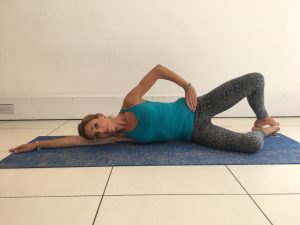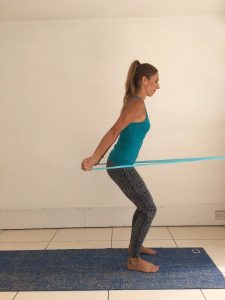It’s that time of the year again when snow bunnies hit the slopes for the thrill and excitement of winter sports. However, they have a high incidence of injuries; more than 246,000 people were treated at hospitals, doctors’ offices, and emergency rooms for injuries related to winter sports in 2015, according to the U.S. Consumer Product Safety Commission 88,000 injuries from snow skiing, 61,000 injuries from snowboarding, 50,000 injuries from ice skating, 47,000 injuries from sledding, tobogganing, and snow tubing. Injuries are mostly traumatic, e.g.: falls, collisions and lift accidents. They usually happen over dangerous terrain and at the end of the day when the body is tired, when snow conditions and visibility aren’t good or after lunch after having over indulged on après ski! The good news is that the majority of injuries can be prevented if you prepare for winter sports by keeping in good physical condition, staying alert, and stopping when you are tired or in pain.
Current/previous injuries
Discuss any current or previous injuries with your Physiotherapist. In a nutshell, a specifically designed Physiotherapy and Pilates programme can help by identifying muscle imbalances and restrictions from previous injuries and prescribing targeted movement to overcome these. It goes without saying that we advocate a warm up and stretch because cold muscles are more prone to injury! Most importantly, listen to your body and stop when you feel tired or if you are in any pain. It’s a good idea to rest the mind and the body every 2 hours. Remember to stay hydrated, before, during and after your day on the slopes.
Current fitness level
Developing good physical fitness prior to your trip is an investment worth its weight in gold. It is essential to build fitness that is specific to the requirements of your chosen winter sport. This is where a specific Physiotherapy and Pilates programme, which takes into account musculoskeletal screening, goal setting, overload and FITT principle’s as well as risk management can help.
Equipment
It sounds simple but wearing the right equipment and protective gear including goggles and helmets are essential. Correct protective equipment can reduce the incidence of head, neck and face injuries by 43%. Be aware that in snow parks, helmets, wrist guards and body armour are recommended. Be sure that your boots and bindings are set, adjusted to your height and weight and tested in the ski shop prior to hitting the slopes. Checking bindings on steep terrain will be more difficult and faulty bindings are a high risk for injury!
First time and occasional skiers
First time on the slopes? There are a few things you should know before setting off on your first ski adventure. Take lessons as beginners are more prone to injury, so learn how to fall safely, stand up properly, stop, merge and yield to other skiers. Make sure you ski with a partner choosing trails to match your own ability. Take regular breaks, watch your speed and approach all lifts with caution. Even regular skiers should watch the weather, watch for rocks and patches of ice and observe warning signs but this is even more important for first timers! Ensure you seek shelter and medical attention immediately if you or anyone with you is experiencing hypothermia or frostbite.
How can Physiotherapy and Pilates help?
In a nutshell, a specifically designed Physiotherapy and Pilates programme can help by identifying muscle imbalances and restrictions from previous injuries and prescribing targeted movement to overcome these. A Pilates program aims to improve core and pelvic stability. Ensuring a stable pelvis during dynamic activities reduces the impact on the back, hips and knees and allows for better control of directional changes. These changes require the hips to rotate into a turn, while the torso counter rotates in the opposite direction – a precision skill aided by a strong core. Improved posture and biomechanics can also assist with snow sports and as Physiotherapists possess a deep understanding of these, they can assess your own technique to improve alignment and control. Finally, the prevention of falls, improved adaptation to directional changes and different conditions can be achieved by improving balance and proprioception. Reformer and Mat Pilates require the mind and body to continually readjust and tune the responses of the muscles – a key element to your success in maintaining balance and preventing falls. Specific stretches and mobility exercises play an important role on the prevention of overuse and muscular imbalances. Through analysing the ski and snowboard techniques, key areas of the body prone to overuse and malalignment can be targeted through specific stretch and mobility exercises.
Here’s a few Skilates movements to get you started!
The Clam: An essential starter for building deep gluteal control necessary for hip and pelvic control.


• Lie on your side, with your hips bent to 45 and knees to 90 degrees. Stack your shoulders, hips and legs. Tie a piece of theraband around your thighs.
• Gently squeeze your heels together and lift your top knee as far as possible without moving your pelvis.
• Slowly lower your top knee.
• Build up to 3 sets of 15 reps.
Shoulder bridge: A solid movement for building pelvic control, gluteal and adductor strength as well as balance and proprioception.


• Lie on your back with a Swiss ball under your lower leg, legs gently squeezing together.
• As you breathe out, peel your back away from the mat bone by bone starting with the tailbone and ending on the shoulder blades.
• Take a breath in and hold.
• Breathe out and layer your back on the mat starting at the top of your back and ending with the tailbone.
• Repeat 6 – 8 times.
Skiers standing squats: Great for building back, pelvis and hip control along with balance and proprioception.


• Stand upright, feet hip distance apart on a half foam roller, BOSU or soft cushion.
• Bend at your hips and knees to tilt your trunk forwards, keeping your back straight and your knees hip distance apart.
• Straighten our hips and knees to lengthen the body upright.
• Build up to 3 sets of 15 reps.
Standing plough: For building control of the shoulder girdle while maintaining strong control of the back and pelvis


• Stand, feet hip distance apart and hold onto the ends of a length of TheraBand looped over a door handle. Palms facing backwards.
• Breathe out and press your arms backwards beyond the trunk, keeping your arms long and the body stable.
• Breathe in and release the arms forwards with control.
• Build up to 3 sets of 15 reps.
Essential stretches
The following exercises are key in improving and maintaining your flexibility for winter sports. Aim to practice these movements daily while preparing your body for your trip and then as a warm up and cool down to your skiing or boarding. Hold each movement for approx. 30 seconds and aim to repeat each stretch approx. 5 times.
You can also use spiky balls to release muscle groups after a hard days skiing or whilst you prep your body.
The Iliotibial band (ITB): Runs down the outer side of the hip and thigh.

The Soleus: The deeper calf muscle.

The gastrocnemius: The superficial calf muscle.

The gluteal muscles: the biggest muscles in your body!


